-
Posts
19,303 -
Joined
-
Last visited
Content Type
Profiles
Forums
Articles
Gallery
Downloads
Events
Posts posted by JHCC
-
-
Hobby, hobbier, hobbiest….
(Not to mention hobbits.)
-
That was the original plan, but you got turned around.
-
Those calipers and dividers often have good resale value. I once got a big box of these from a Facebook Marketplace listing, and they did very well on my tailgating table at Quad-State.
-
That's the great thing about iteration: when you push yourself to make each new version better than the one before, not only is that new version an improvement on the previous one, but your skills and perceptions are getting better as well. This in turn prepares you to make the next version better, and the one after that, and the one after that. Eventually, you'll find that those incremental improvements have resulted not only in better finished objects, but greater ability on your part.
-
I’m glad it worked out. Much improved!
6 minutes ago, Frosty said:kitty litter sand
We only have dogs.
-
Yes, it is an industry-standard kitchen sink. It's also an IFI-recommended *salvaged* kitchen sink.
Also, in the established tradition of reusing everything, the sand was previously the fill of my old side-blast coal forge.
-
If you haven't read the Recommendations for Working with Anthracite post, do.
-
-
-
-
-
The thought was adding a harder skin to the outside might affect its resistance to compression on side and tension on the other (kind of like a lally column). Alternately, I can always root around in the pile of shafts and axles to see if there’s anything there that’s the right size.
-
Wrap it in several layers of kaowool.
-
20 hours ago, Frosty said:
Nice bull dozer die John, how wide have you tried to bend in it?
Frosty The Lucky.
Last night, I tried to bend a piece of 3/16” x 3” scrap, which took the handle extension and pretty much all my strength. While it did bend most of the way to 90°, the 60B1 pin started to bend a little. I straightened it out on the anvil with a few blows from a hand sledge, but I think if I need to bend anything that big in future, I’ll probably do it hot. I think I’ll also go ahead with my plan to case-harden the pin, to give it a bit more rigidity.
While I was in the shop, I also made a keeper chain to ensure that I won’t lose the handle extension pin:
And did some more cleanup on the current railing project:
The new vise stand is proving to be extremely useful for this kind of thing, although Lola seems unimpressed.
-
So far, only 3/16” x 1” flat bar. I’ll be trying out some other stock later; Hossfeld says the capacity for theirs is up to 3/16” flat and 1/4” round.
-
12 hours ago, George N. M. said:
A hasp is a latch or loop for a padlock which holds or locks the door shut. A hinge is just the pivot which allows a door or gate to swing.
Many hasps are hinged; not all hinges are hasps.
Also, lots of things incorporate hinges besides doors and gates. Treasure chests, automobile hoods, and some varieties of motor mount spring to mind, as does a certain Hossfeld #2 Universal Bender stand....
-
-
As noted in the "What did you do in the shop today?" thread, I made a bulldozer die and its pins:
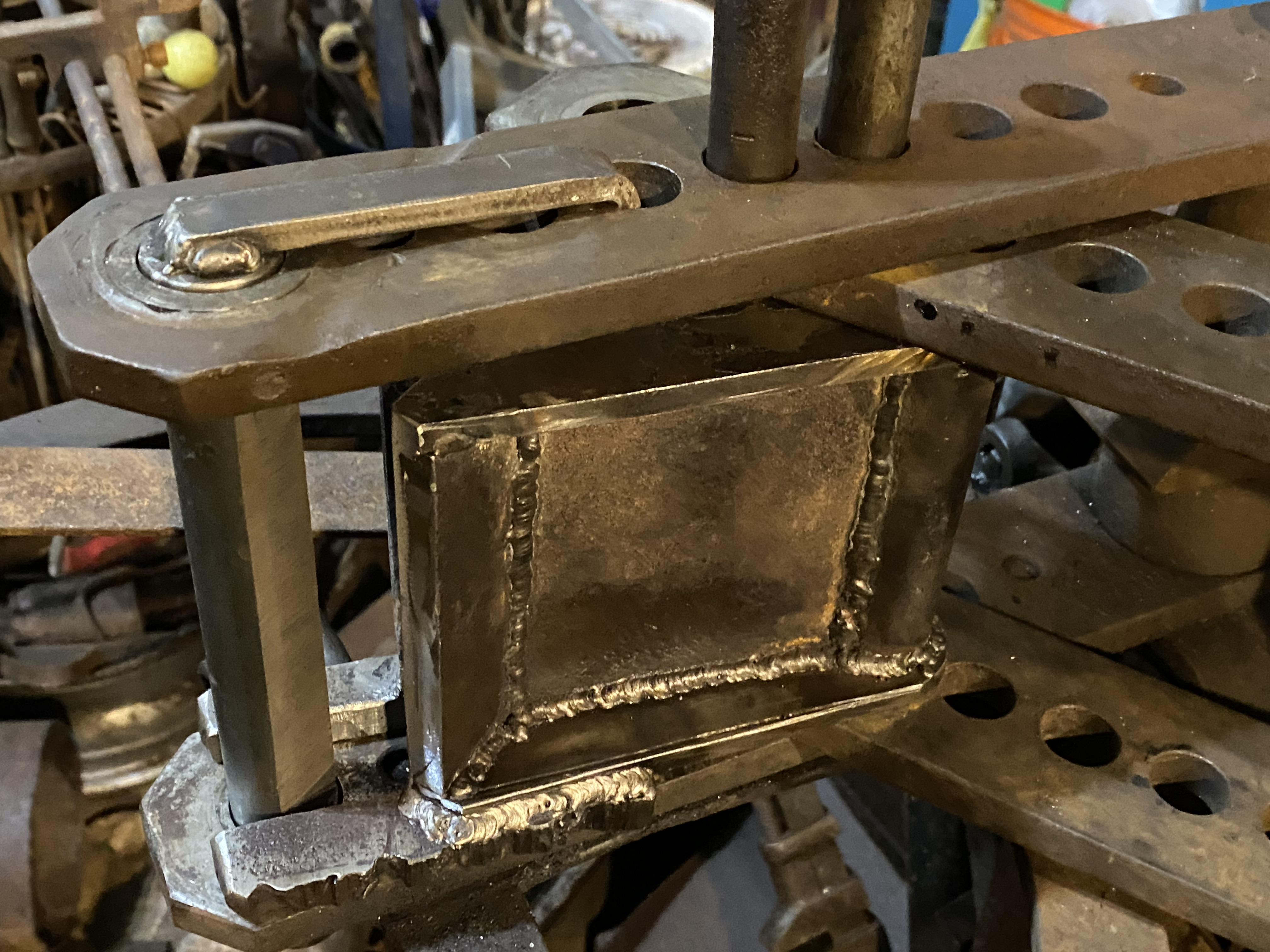
The 60B1 Center Pin (the one with the right-angled facets and the arm that keeps it from rotating) and the 60B2 Bulldozer Die are both made from mild steel from my scrap bin. The 53B Wrist Pin (not visible in the above photo; it's a straight pin that allows the die to pivot within the swing arm and is trapped in place by the arms of the outer frame) is made from a piece of mystery metal that I suspect is 4140*. None of these are heat-treated, although I'm toying with the idea of case-hardening the 60B1 to give it a little extra toughness. If I do, I'll probably do the same with the work faces of the 60B2 as well, to give them a little abrasion resistance.
The Hossfeld manual says that the bulldozer die's maximum capacity is 3/16" flat. Here's a photo of a piece of 3/16" x 1" flat bar that I bent just with muscle power and without the handle extension.
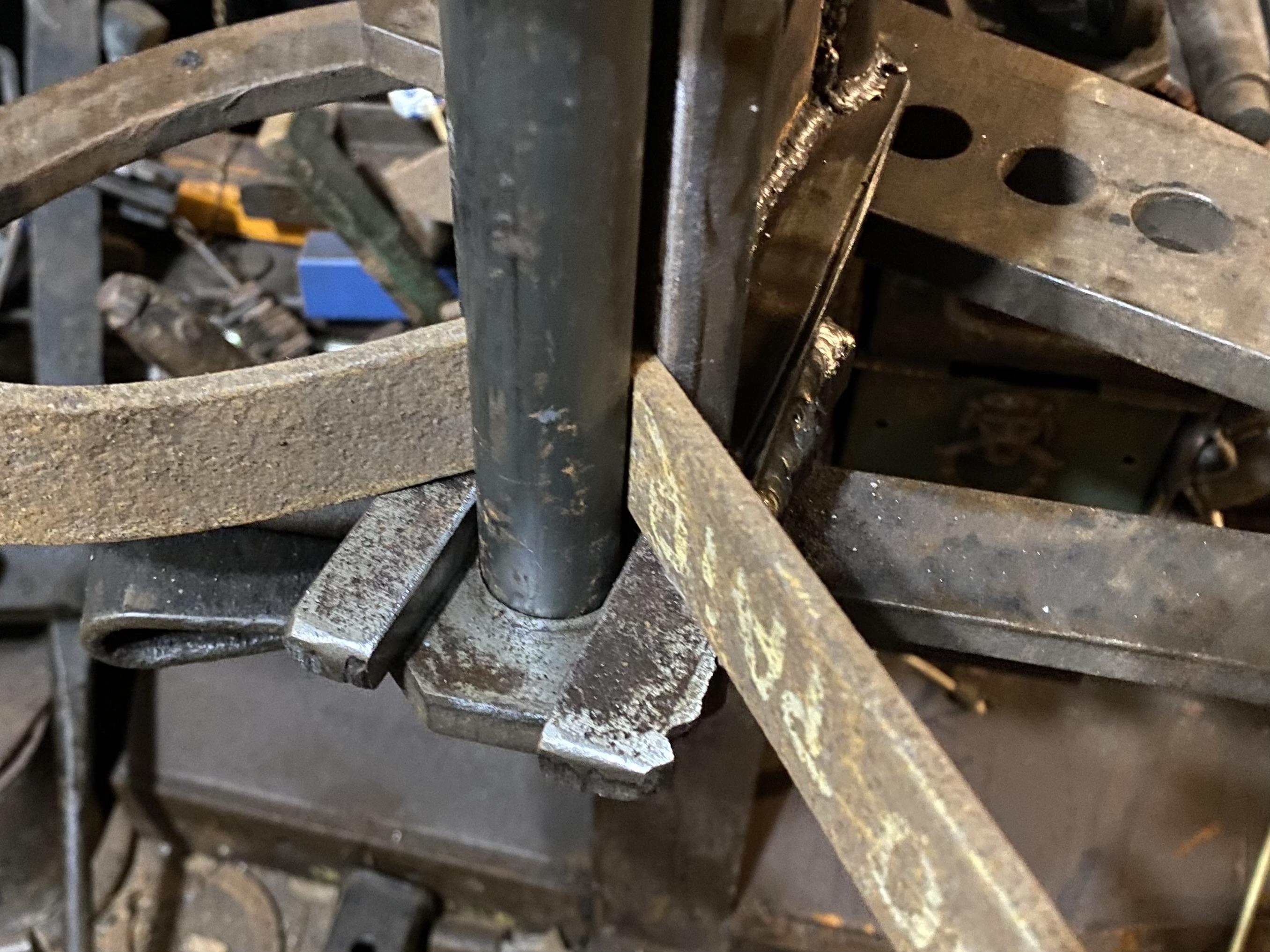
I haven't yet tried anything wider, but I'll keep you posted.
I'm probably going to leave this semi-permanently set up in the bender, as I can imagine needing it fairly regularly for making mounting brackets or the like for various bits of shop furniture and equipment. I think this will be a good combination with the recently completed hinged mounting described above.
* This is from the same piece from which I made my 19B4 U-pin with lug and the ring-end pin for my nonstandard roller block.
-
Thanks, Das. It's very cool tool, like having a miniature press brake in the shop.
-
-
4 minutes ago, Frosty said:
Aren't there more factors to efficiency than just time John?
I was being pithy rather than scientific.
-
Efficiency is just effectiveness in a shorter time frame.
13 minutes ago, SubterraneanFireForge said:it seems like using a horn instead of the sharp edge of the anvil would result in Les lumpyness that has to be forged down later.
Not if done properly. If you're moving your workpiece a lot in between blows, then yes, you will end up with a sort of lumpy sawtooth pattern that will require a lot of smoothing. However, if you make sure to connect each divot, then the surface will be a lot more even. It's a little hard to explain, but this video from Brian Brazeal gives a good example of what I mean:
25 minutes ago, Ridgeway Forge Studio said:Ideally, a fuller would be supported uninterrupted all the way to the ground, the way some French pig anvils are with their slightly domed faces. If you had, for example, a horn that kept its top radii but extended vertically into the ground (which would make it not a horn I suppose), it would be more effective than an unsupported horn.
A more dramatic example is the kind of traditional Chinese anvil with a completely domed top:

-
On 1/26/2024 at 9:09 PM, JHCC said:
The splice material is the blue tape, glued down with polyurethane adhesive. I’ll keep y’all posted.
Quick update: the belt dulled before the splice blew out. Better than the other way around.
-
I gather the ones they use now basically use gravity to hold themselves in place.
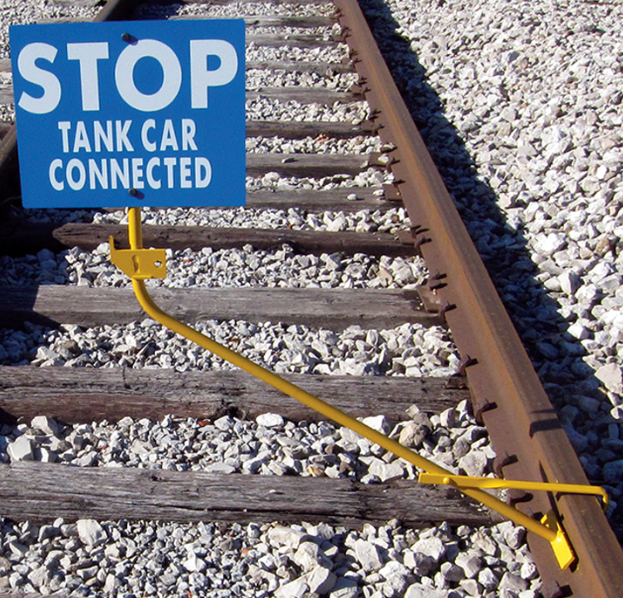
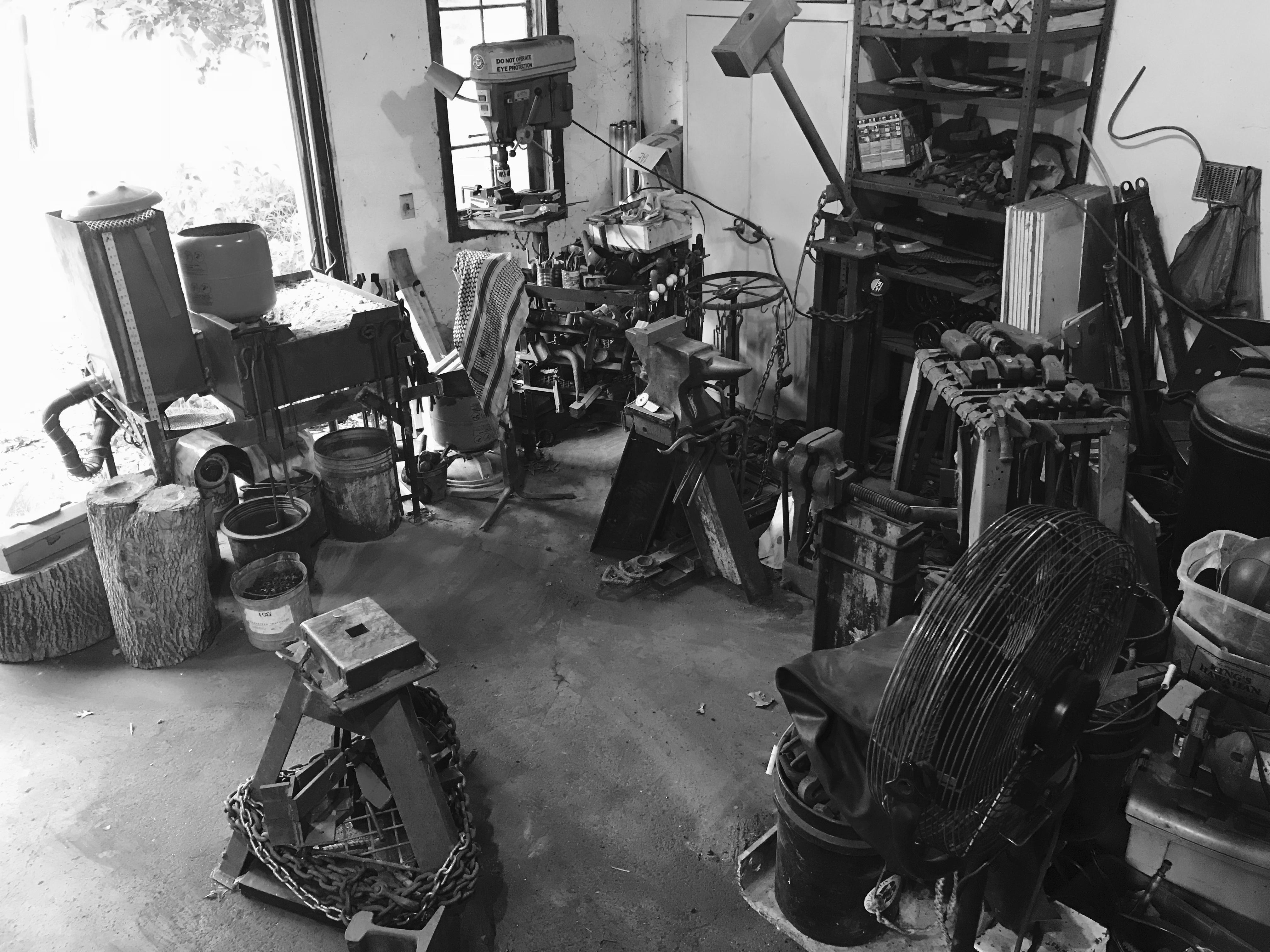

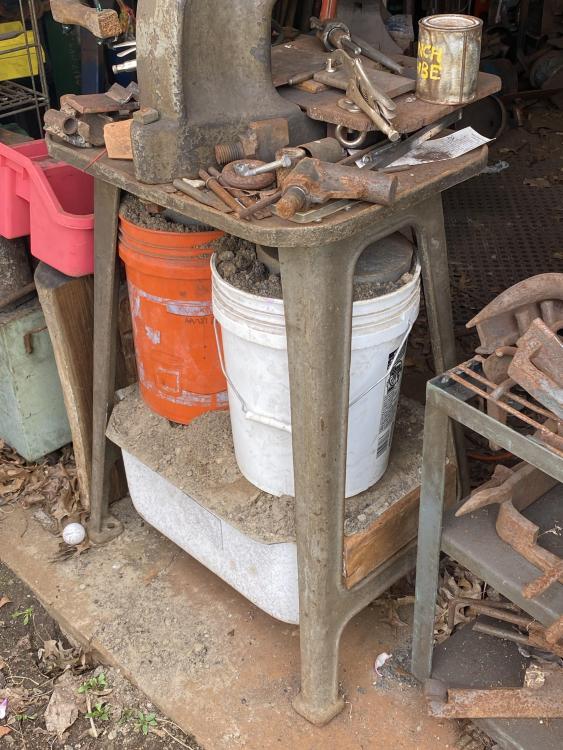
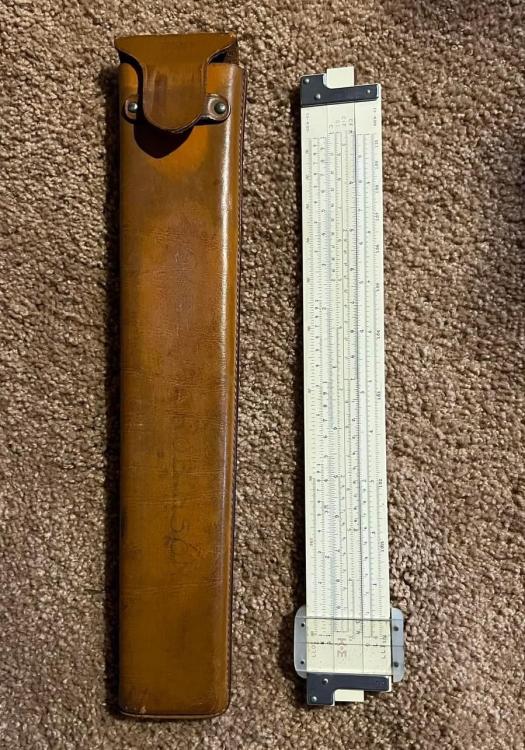
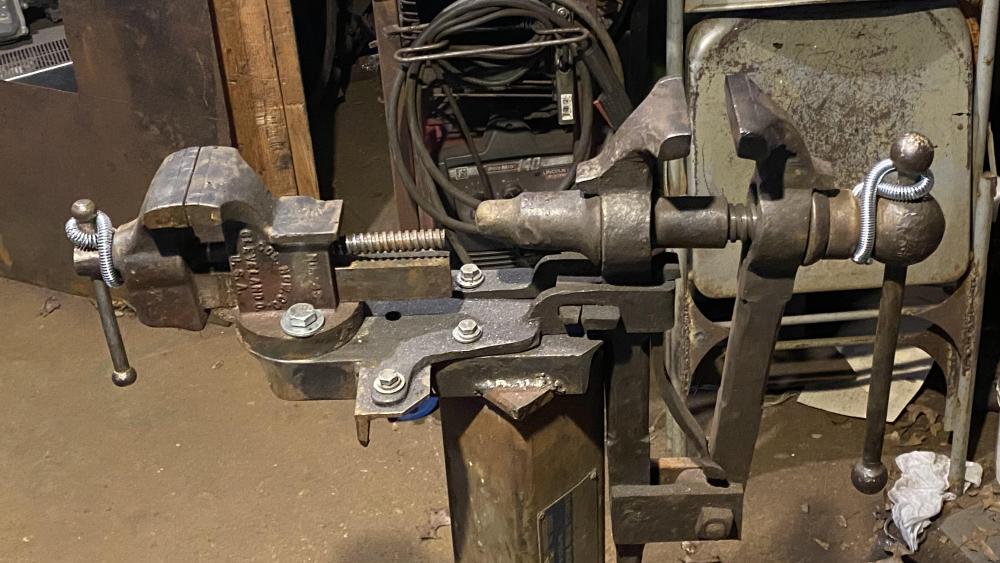
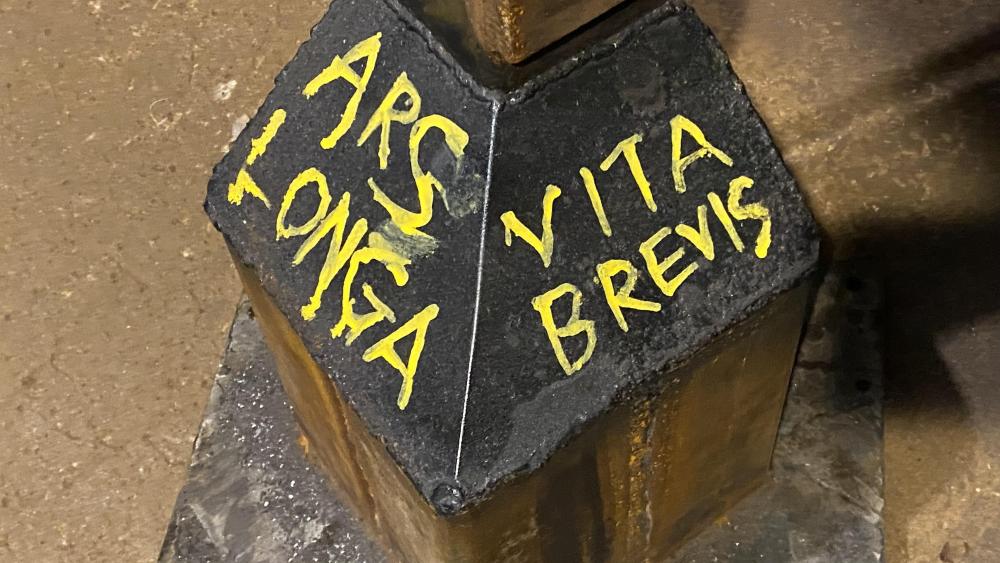
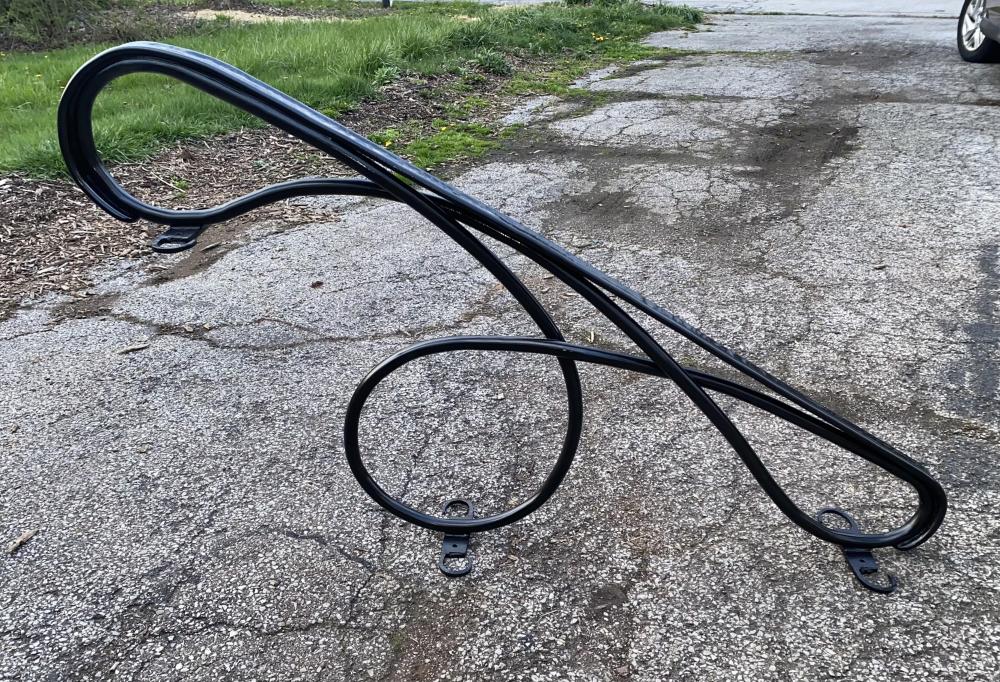
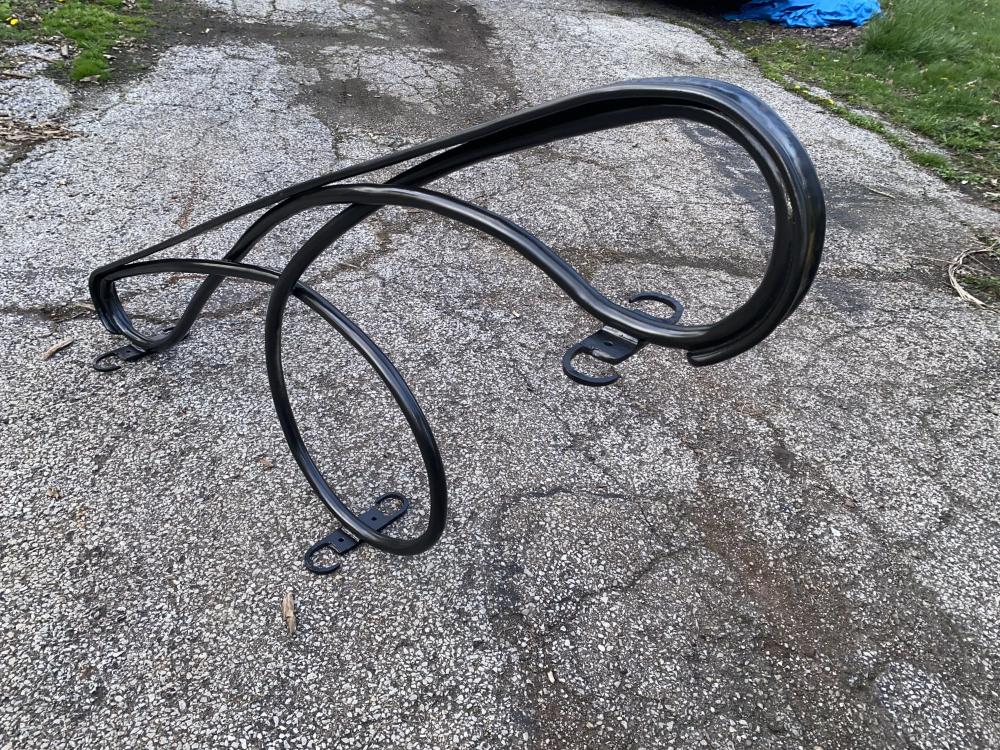
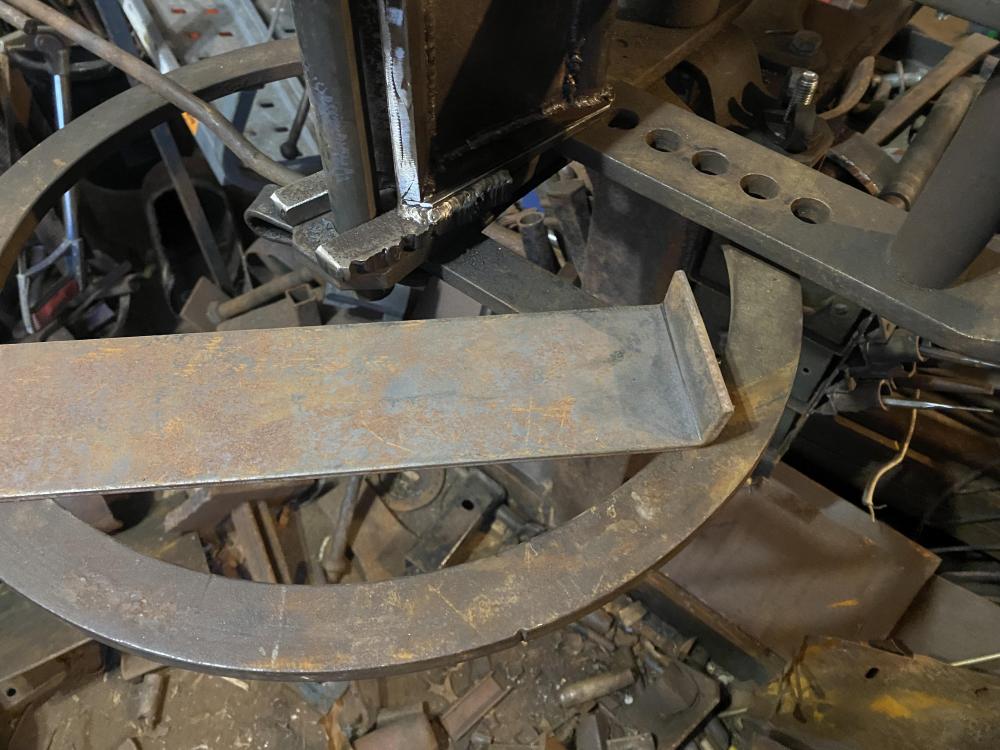
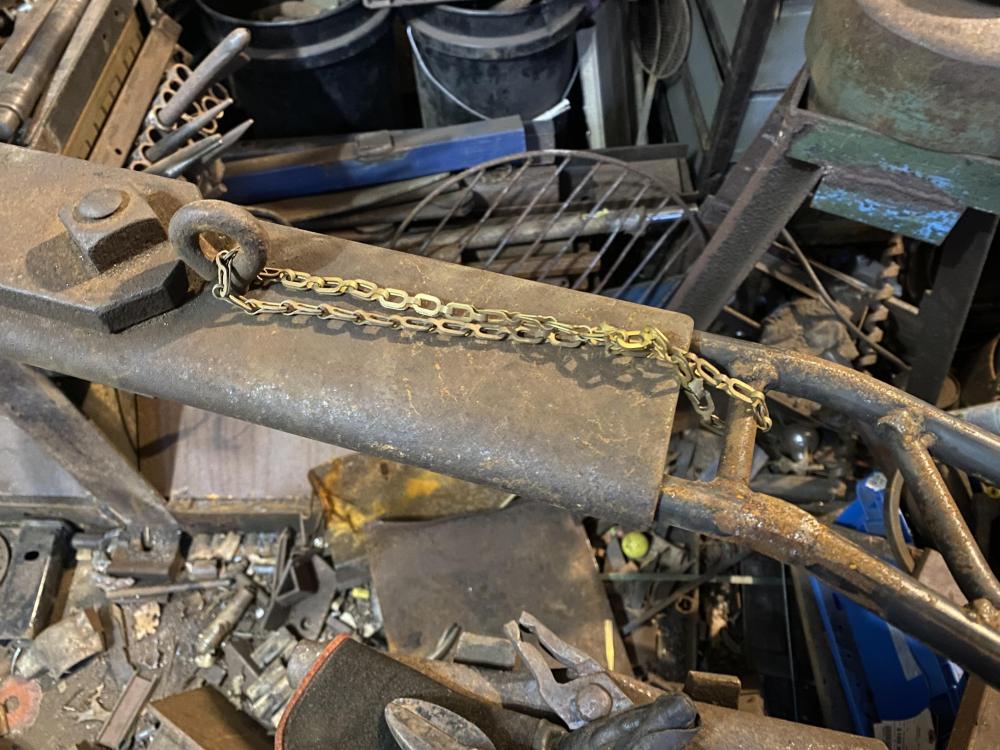
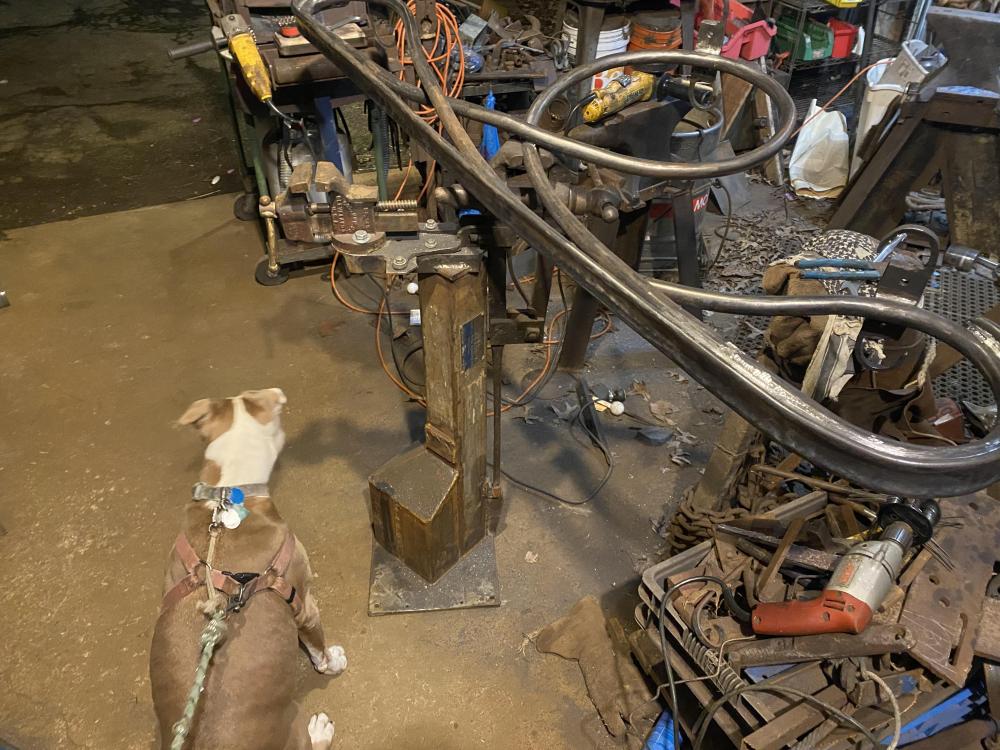
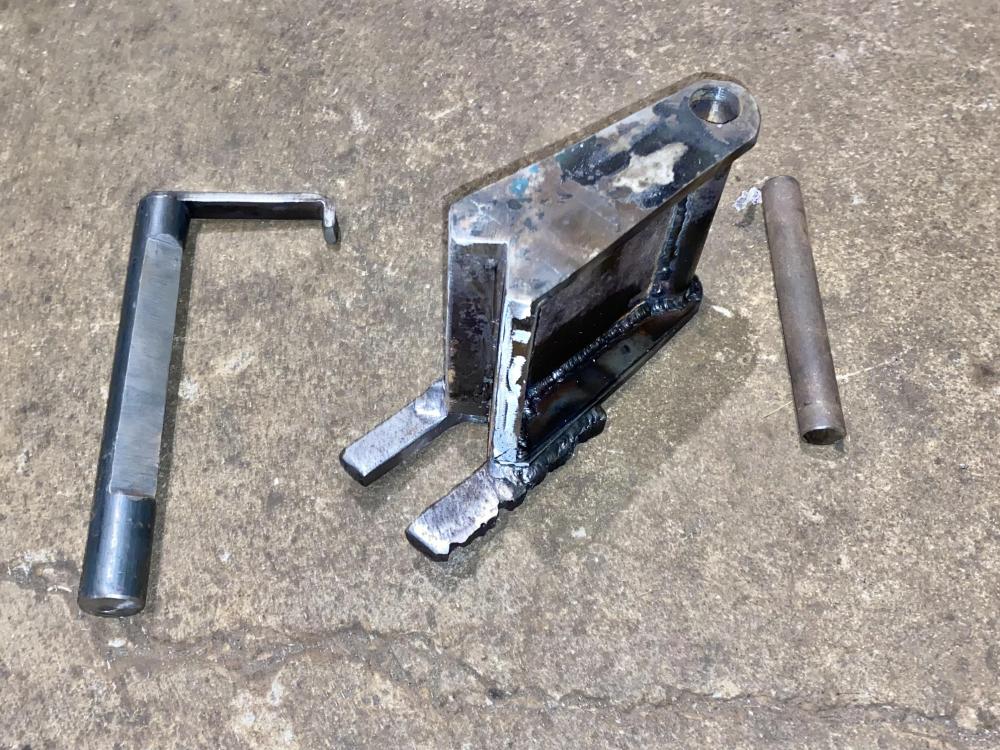
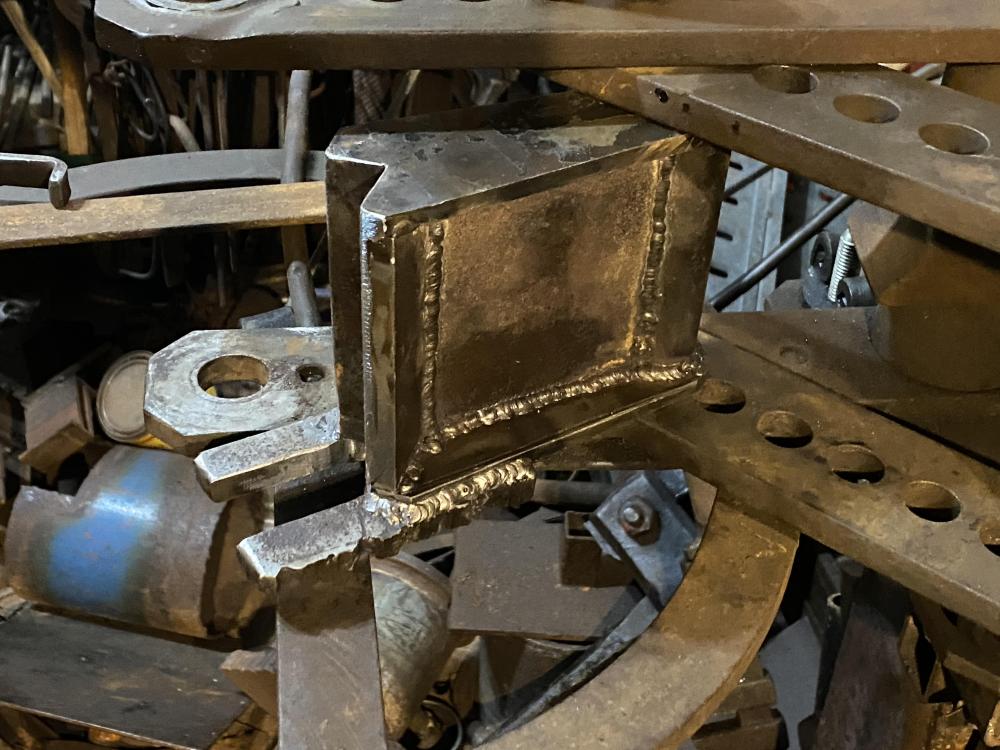
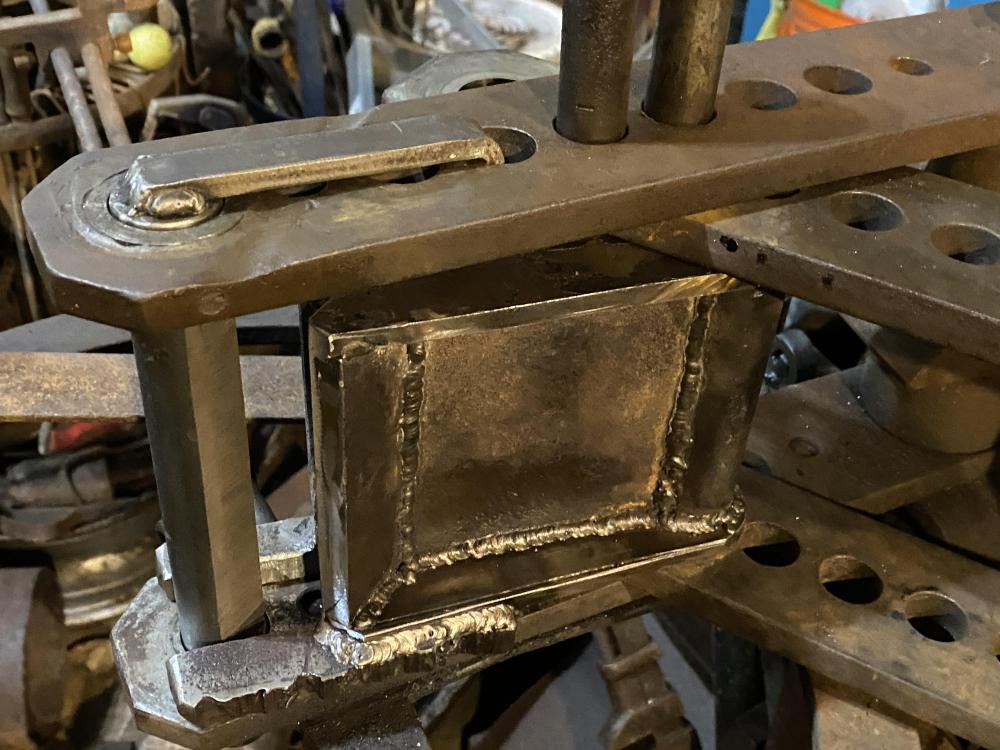
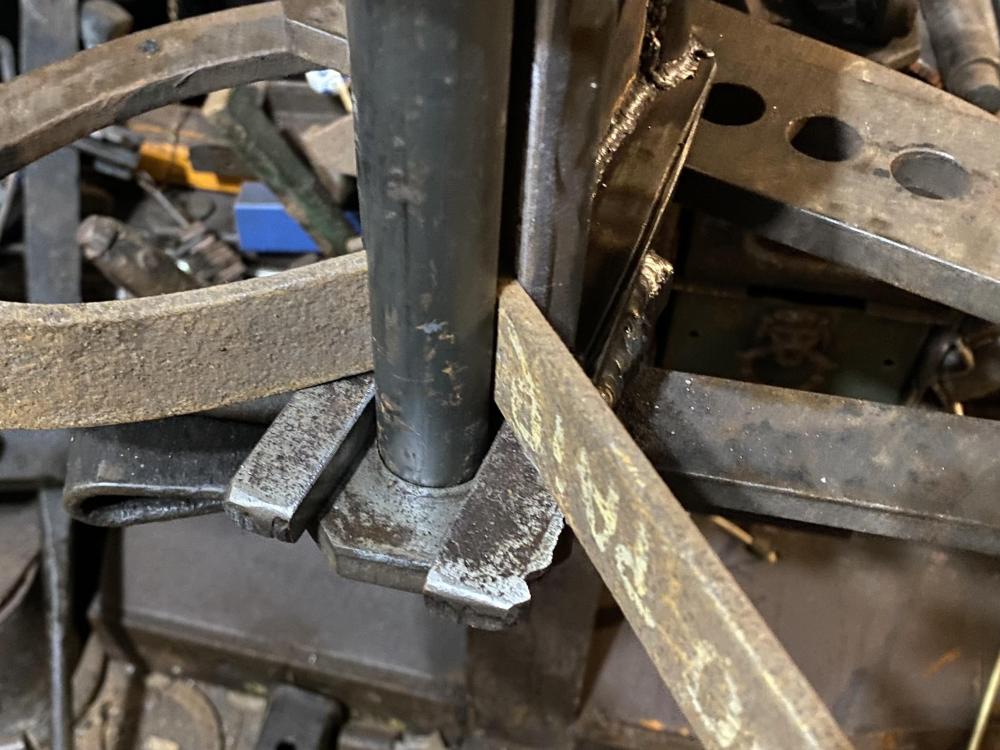
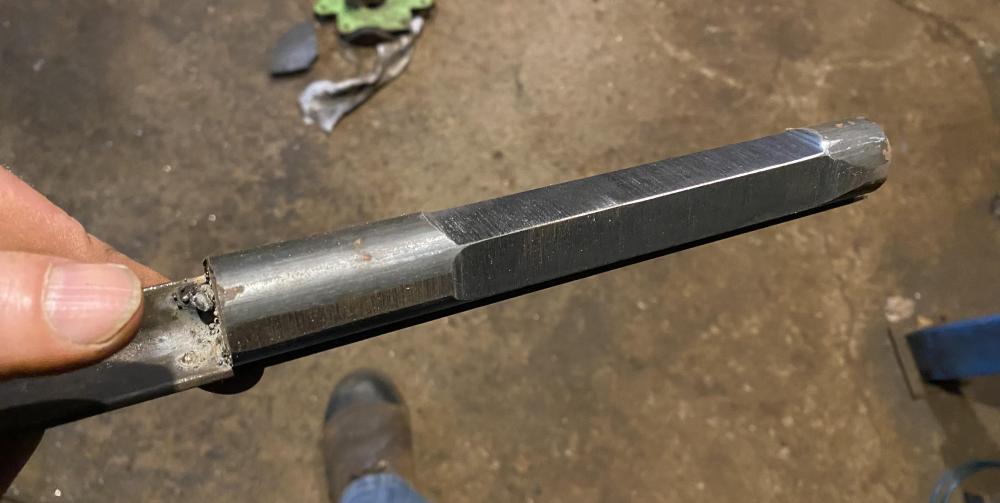
What did you do in the shop today?
in Blacksmithing, General Discussion
Posted
Found a nice chunk of 1” diameter shaft lurking at the bottom of the pile, so it looks like I’ll be going this route.